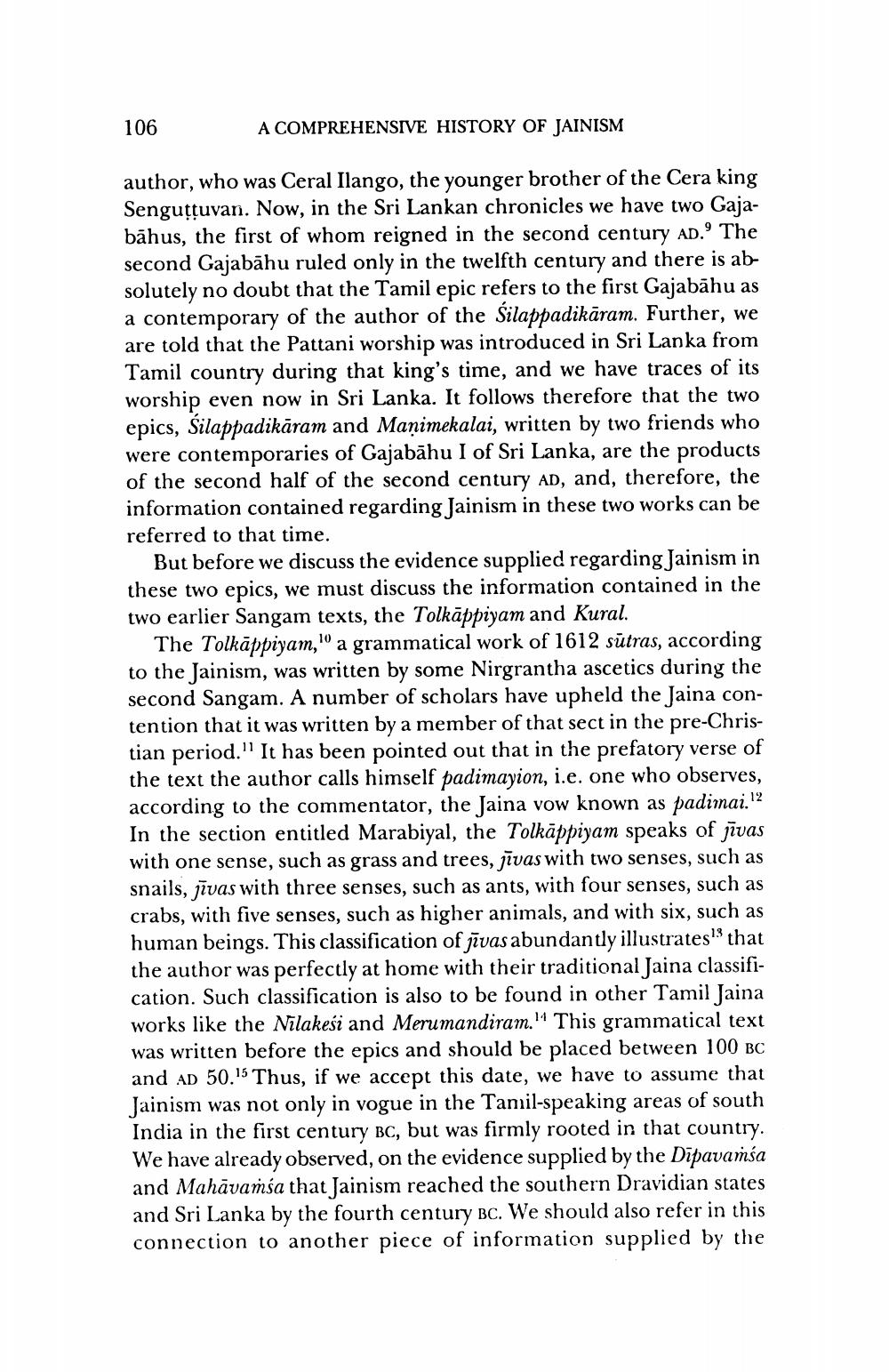________________
106
A COMPREHENSIVE HISTORY OF JAINISM
author, who was Ceral Ilango, the younger brother of the Cera king Senguttuvan. Now, in the Sri Lankan chronicles we have two Gajabāhus, the first of whom reigned in the second century AD.' The second Gajabāhu ruled only in the twelfth century and there is absolutely no doubt that the Tamil epic refers to the first Gajabāhu as a contemporary of the author of the silappadikāram. Further, we are told that the Pattani worship was introduced in Sri Lanka from Tamil country during that king's time, and we have traces of its worship even now in Sri Lanka. It follows therefore that the two epics, Silappadikāram and Manimekalai, written by two friends who were contemporaries of Gajabāhu I of Sri Lanka, are the products of the second half of the second century AD, and, therefore, the information contained regarding Jainism in these two works can be referred to that time.
But before we discuss the evidence supplied regarding Jainism in these two epics, we must discuss the information contained in the two earlier Sangam texts, the Tolkāppiyam and Kural.
The Tolkāppiyam, 10 a grammatical work of 1612 sūtras, according to the Jainism, was written by some Nirgrantha ascetics during the second Sangam. A number of scholars have upheld the Jaina contention that it was written by a member of that sect in the pre-Christian period." It has been pointed out that in the prefatory verse of the text the author calls himself padimayion, i.e. one who observes, according to the commentator, the Jaina vow known as padimai.12 In the section entitled Marabiyal, the Tolkāppiyam speaks of jīvas with one sense, such as grass and trees, jīvas with two senses, such as snails, jīvas with three senses, such as ants, with four senses, such as crabs, with five senses, such as higher animals, and with six, such as human beings. This classification of sīvas abundantly illustrates that the author was perfectly at home with their traditional Jaina classification. Such classification is also to be found in other Tamil Jaina works like the Nilakeši and Merumandiram.! This grammatical text was written before the epics and should be placed between 100 BC and ad 50. Thus, if we accept this date, we have to assume that Jainism was not only in vogue in the Tamil-speaking areas of south India in the first century BC, but was firmly rooted in that country. We have already observed, on the evidence supplied by the Dīpavamsa and Mahāvamśa that Jainism reached the southern Dravidian states and Sri Lanka by the fourth century BC. We should also refer in this connection to another piece of information supplied by the




